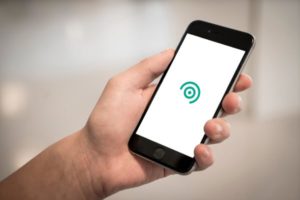What’s the first thing most employees do when they come to work? If you thought it’s having coffee in the office kitchen, think again. Before anything else, they must mark their arrival in the attendance system.
Although the outbreak of the coronavirus pandemic have pushed more employees to work from home, companies still need to keep track of them. Interestingly, it was the pandemic that ultimately revealed the strengths and the weaknesses of attendance systems. These are no longer limited to checking whether an employee has arrived at the workplace, monitoring the hours worked, and respecting the time allotted for a lunch break. As Michal Svienty, IKEA Bratislava’s People and Culture Manager, says: “The pandemic has led us to making full use of one of the features of our attendance system, which is the ability to communicate with our employees via texts.” However, they also revealed some shortcomings in the system. Since work from home was only partially used in the past, it was not necessary to upgrade the system so that one could log in remotely. According to Michal, they lack the option to mark the start, lunch break, or the end of work through the application while working from home. Currently, they keep it operational by having an employee reporting to the manager, who in turn, manually registers them in the attendance system.
Flexibility thanks to the app
According to Daniela Vačková, HR manager at Innovatrics, a mobile application is what companies miss most with existing attendance systems during the pandemic. “Employees can instantly report their absence using the app from anywhere. The manager receives a notification and can respond to the request within a few seconds,” explains Daniela. This is also how the Fingera attendance system works. “During the pandemic, this is an irreplaceable tool for both employers and employees,” she adds. The department managers immediately know who they can count on, who is working from home, who is in the office, and who isn’t working. “Organising online or face-to-face meetings, or managing critical teams, whose presence at the workplace is essential, is much more efficient then.” Among other things, she adds, Innovatrics greatly benefits from the addition of a calendar to Fingera. “It was created precisely on demand during the pandemic. The information about the presence or absence of colleagues can be found very quickly and helps us to organize our work.”
The online attendance system does not only help managers or HR managers as a control tool. It has also been very beneficial for employees who were not used to working from home for days and were not able to set up a good work-life balance. An internal survey presented the same outcome. “People gradually found a balance between work and family. Fingera helped them as well. In the application, everyone could see how many minutes or hours had passed since the beginning of their working day, could take a break by indicating it in the app, and finish work at the end of their working hours,” Daniela says.

It also detects the temperature of mask avoiders
Even at times of hard lockdown, there are companies requiring most of their staff to be physically present at work. For example, in the Zvolenský dairy production plant, as many as 98 percent of their employees work this way. According to their HR manager Anežka Oravcová, they do not have such increased demands on the attendance system in the company compared to those that have the majority of their employees who work from home.
However, even these companies may find some significant benefits in using Fingera. For example, it can connect the attendance terminal to a body temperature sensor. It is more reliable than a person who checks the temperature with a hand thermometer at the entrance of the building. “We all know that manual measurement is very unreliable. We can see this in shopping centres, where they often measure the temperature at the level of hypothermia,” Daniela says.
Thanks to the correct setting of the sensor, Fingera will not allow anyone with an elevated temperature to enter the company premises. “High-temperature notifications can be set to go directly to superiors or building security,” explains Daniela.
Fingera can also deal with those who consider wearing a face mask restrictive. “It can detect whether an employee entering the building has a mask on their face and whether it is being worn properly,” Daniela adds. Fingera can thus eliminate contagion in companies and help slow down the spread of the virus.